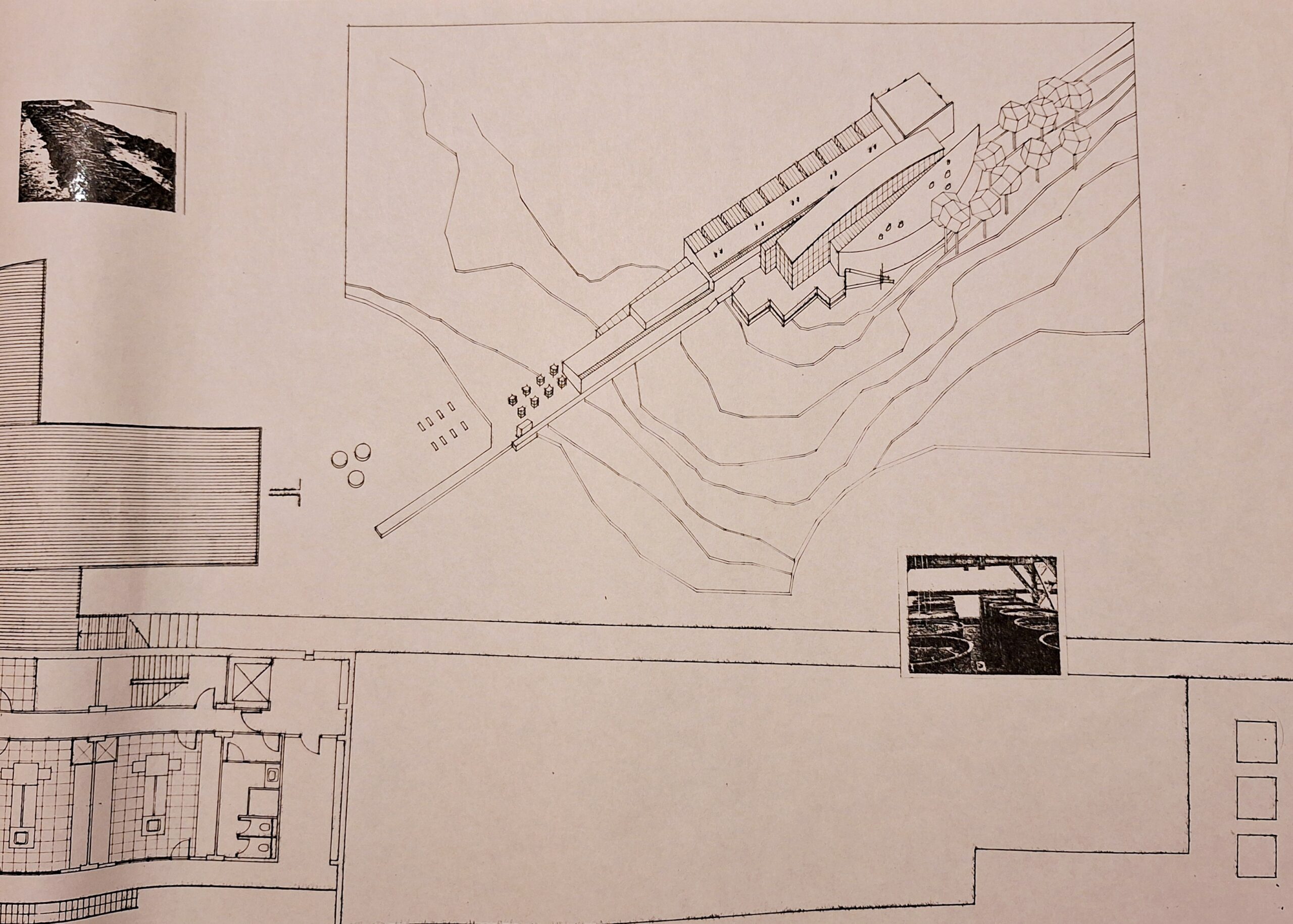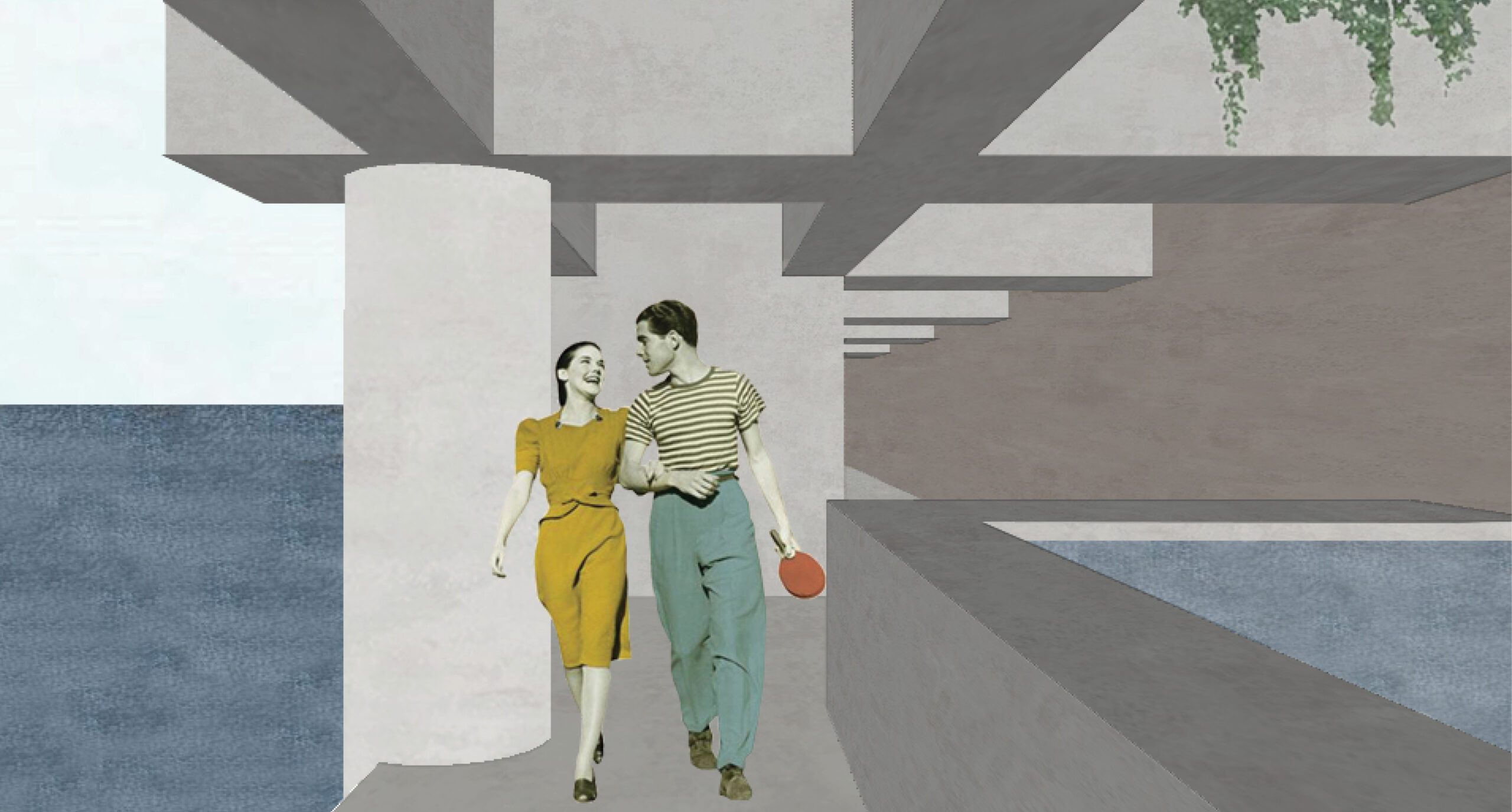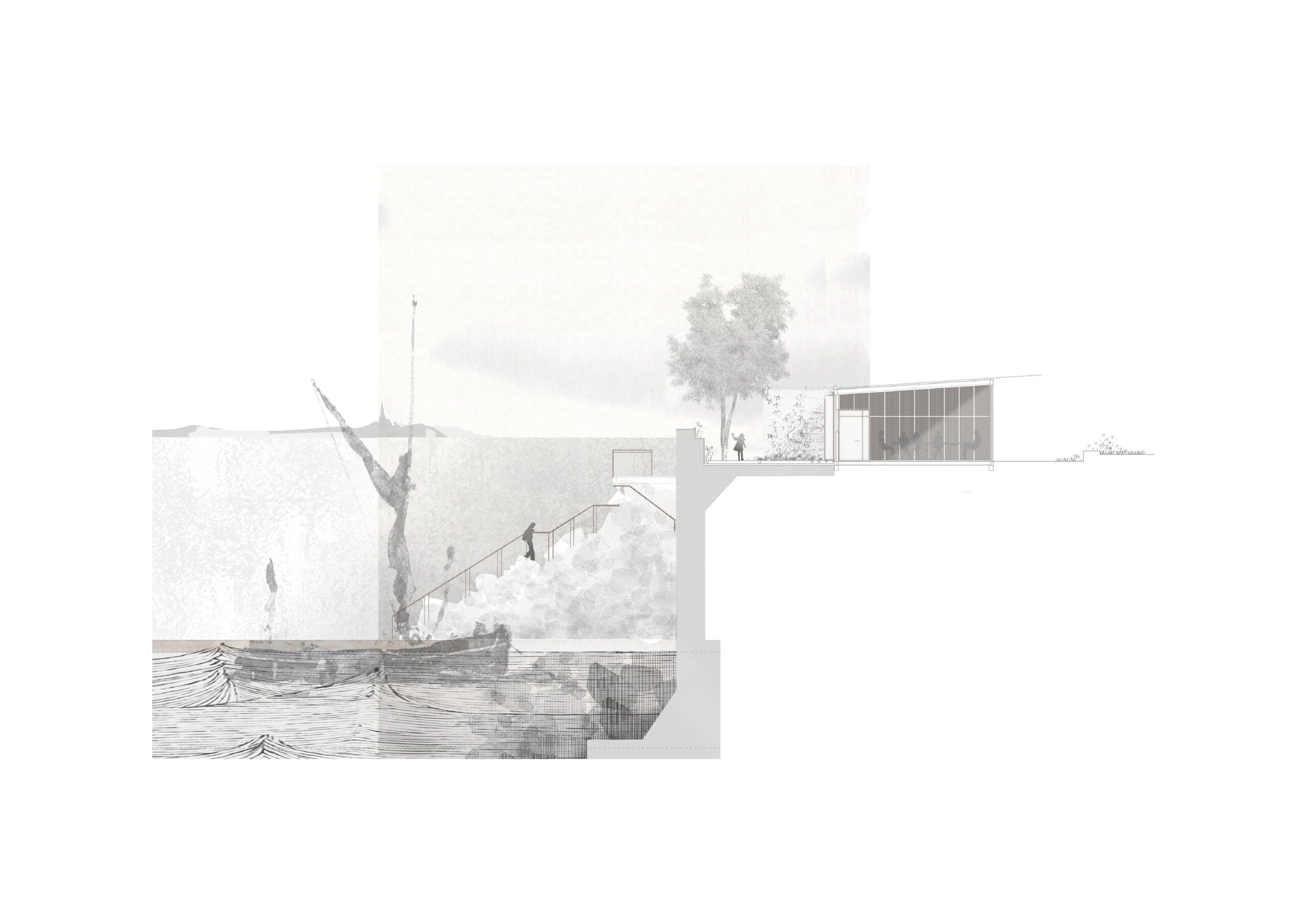Marine Institute and Aquarium



This project explores the Material Culture of Carlisle Pier in Dun Laoghaire, and how shadows of the past can inform design. Historically significant as an emigration gateway, a port for people rather than cargo, this project proposes to reuse the now disused pier as a public space which reclaims access to and interaction with the tides. Traces of each layer of development, since the original 1850s granite pier, are excavated and exposed.
Optimising the gaps between the topographical, historical and tidal layers a surface and a depth is created. The surface, a garden and walkway in the supralittoral zone, reveals the ribbed structure of the 1960’s concrete overlay. The old railway cutting is excavated to create an in-between sheltered microclimate. The depth, which occupies the intertidal zone, is a sequence of spaces inhabiting the space between the original granite pier and the 1960’s concrete piles. The changing atmosphere of these tidal chambers is connected to the varying relationships to the sea, views, light and reflectivity of the water. The tidal underworld washes away at high tide.
Pozzolanic concrete is proposed to construct this new layer of recreational infrastructure to Dun Laoghaire’s Victorian seafront. This ancient Roman building material, which strengthens when exposed to salty seawater, is reformulated to reuse local waste by-products. Dredged material from Dublin Port and fly ash from the Poolbeg incinerator are proposed as alternatives to traditional aggregate and volcanic ash.

The contemporary picturesque, as presented in this thesis, is a of landscape that is both cultural and industrial nature. Industrial, in that the landscape is a working, productive entity; adapting to changing uses over time, while paced to the tempo of natural and ecological processes. Cultural, in the sense of an empathetic engagement with it’s human collective.
A Landscape Infrastructure for Cork Harbour.
The sea’s potential to transform our contemporary world inspired our research group, to develop an idea for a ‘landscape infrastructure’ in Cork Harbour.
A research archipelago was designed to support the aspirations of the Irish Maritime Energy Resource Cluster IMERC’s, the needs of the Irish Navy and National Maritime College and the environment of Cork Harbour. With the absence of an immediate community of inhabitants, it therefore, tests the ideas of an imagined place developing over time. A landscape of islands is reclaimed, the industrial slagheap is remediated and a tidal wall for wave energy production is created. A network of waterways, walls, wetlands and transport routes, supports the setting for maritime research, testing and training. The tapestry is enriched with a programme of accommodation, public spaces, trading buildings and reprogrammed industrial warehouses.
To evoke the atmosphere of this uniquely imagined seascape, a set of individual research projects were set on this invisible territory.
This study repossesses unprogrammed ground to connect the archipelago in a landscape of public space. Taking cues from topography and history, it carves connections between the existing naval base, remnants of industry, new island additions and natural landscape for new and existing communities to share. The social agenda of the proposal, is a burial ground and public garden for permanent and visiting communities of the islands. It attempts to balance the local identity of Cork Harbour, global influences and the needs of the natural environment. The design moderates private and public thresholds to create spaces for people to meet, share and enjoy in a number of ways. At the same time, it is a geographically sensitive seascape and natural habitat and a place to reflect on time and ecology.